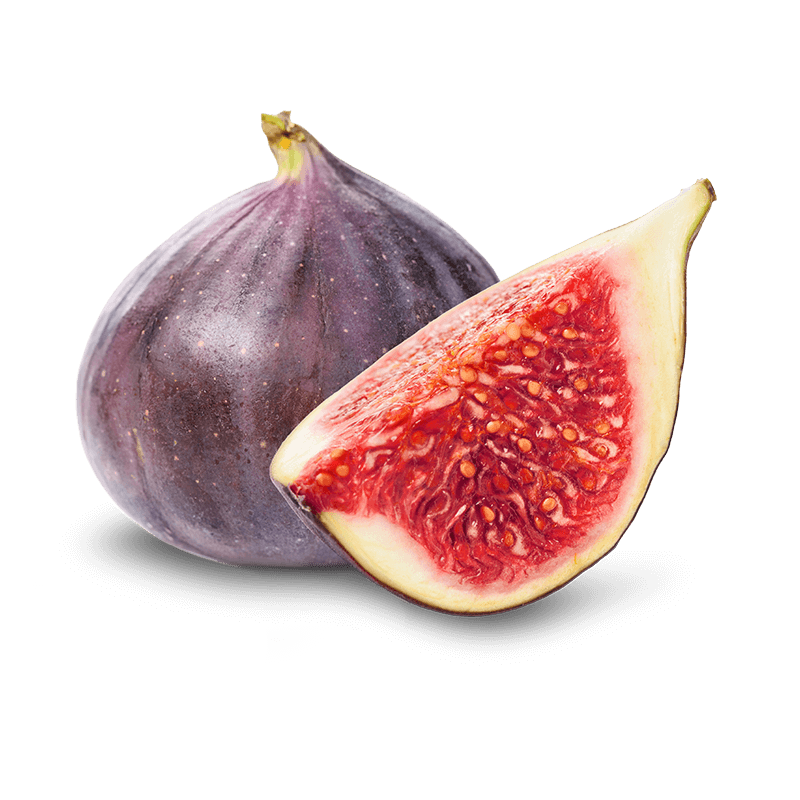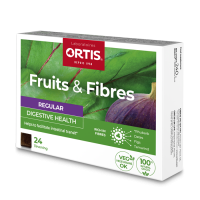
Figs
Latin name
Origin
Used part
Active components
Sugars: contribute to the nutritional content.
Fibre: this indigestible substance has a significant effect on intestinal transit. It also contributes to healthy intestinal flora.
Flavonoids: these compounds have an antioxidant effect and protect the organs against free radicals.
Usage
Figs can be eaten fresh or dried. They can be used as a natural sweetener due to their high sugar content. Their irritant latex is used to treat warts. Figs can not only be used in cooking, the also offer various health benefits. Thanks to their fibre, they can be used to support the function of the gastrointestinal tract and to gently improve intestinal transit. 1-3 Figs support the health of the digestive system. 4-7
Bibliographical references
- Effects of Ficus carica paste on constipation induced by ahigh-protein feed and movement restriction in beagles.
Oh HG, Lee HY et al.
Lab Anim Res. 2011 Dec;27(4):275-81.Epub 2011 Dec 19.
Pubmed: http://www.ncbi.nlm.nih.gov/pubmed/22232635
- Effect of Ficus carica on Functional Constipation
Sun-Young Kim et Al.
The FASEB Journal - April 2010 24 (Meeting AbstractSupplement) lb348
- Effects of Ficus carica paste on loperamide-inducedconstipation in rats.
Lee HY et Al.
Food Chem Toxicol. 2012 Mar;50(3-4):895-902. Epub 2011 Dec 9.
Pubmed: http://www.ncbi.nlm.nih.gov/pubmed/22178225
- DPPH radical-scavenging activity and polyphenol content indried fruits.
Ishiwata K, Yamaguchi T, Takamura H, Matoba T
Food Science and Technology Research, 10, 152-156.
- Antioxidant activities and anthocyanin content of freshfruits of common fig (Ficus carica L.).
Solomon A, Golubowicz S, Yablowicz Z, Grossman S, Bergman M,Gottlieb HE, Altman A, Kerem Z, Flaishman MA.
J Agric Food Chem. 2006 Oct 4;54(20):7717-23.
Pubmed: http://www.ncbi.nlm.nih.gov/pubmed/17002444
- Protection of fibroblasts (NIH-3T3) against oxidativedamage by cyanidin-3-rhamnoglucoside isolated from fig fruits(Ficus carica L.).
Solomon A, Golubowicz S, Yablowicz Z, Bergman M, Grossman S,Altman A, Kerem Z, Flaishman MA.
J Agric Food Chem. 2010 Jun 9;58(11):6660-5.
Pubmed: http://www.ncbi.nlm.nih.gov/pubmed/20443626
- Antioxidant and immunity activity of water extract andcrude polysaccharide from Ficus carica L. fruit.
Yang XM, Yu W, Ou ZP, Ma HL, Liu WM, Ji XL.
Plant Foods Hum Nutr. 2009 Jun;64(2):167-73.
Pubmed: http://www.ncbi.nlm.nih.gov/pubmed/19466553
The health claims that feature on our website in relation to the plants contained in our products are compliant with the list of health claims awaiting final assessment by the Community authorities (cf. website of the European Commission: http://ec.europa.eu/nuhclaims/). However, they may be subject to modification following their assessment by the national competent authorities.
The health claims relating to other nutrients or substances contained in our products that feature on our site are compliant with Regulation No. 432/2012 of the Commission of 16 May 2012 which establishes a list of authorised health claims authorised in relation to food products, other than those in reference to the reduction of the risk of disease as well as community-based development and child health (cf. website of the European Commission: http://ec.europa.eu/nuhclaims/).

 Belgique
Belgique  België
België  France
France  Italia
Italia  Portugal
Portugal  España
España  United Kingdom
United Kingdom  Κύπρος
Κύπρος 

